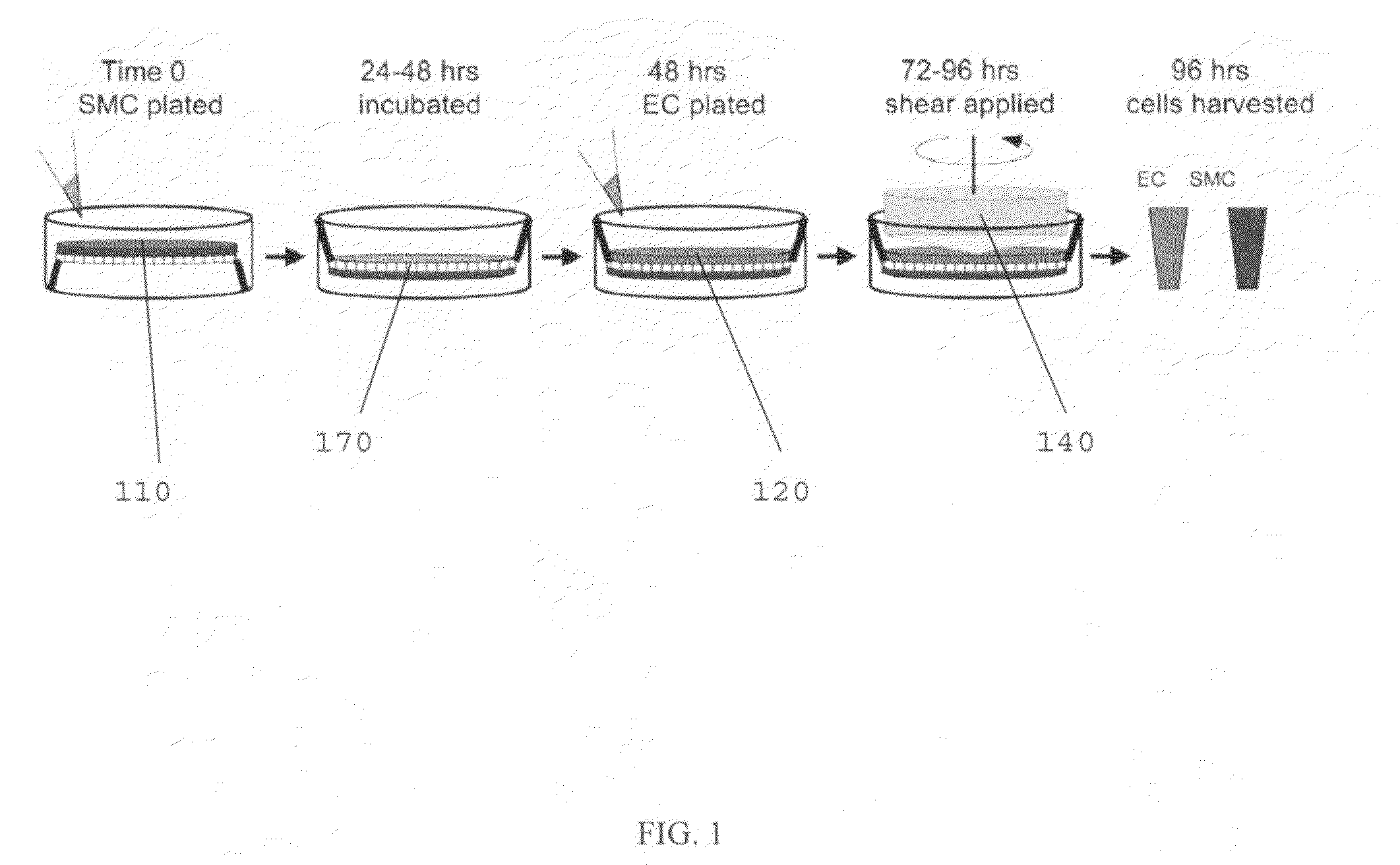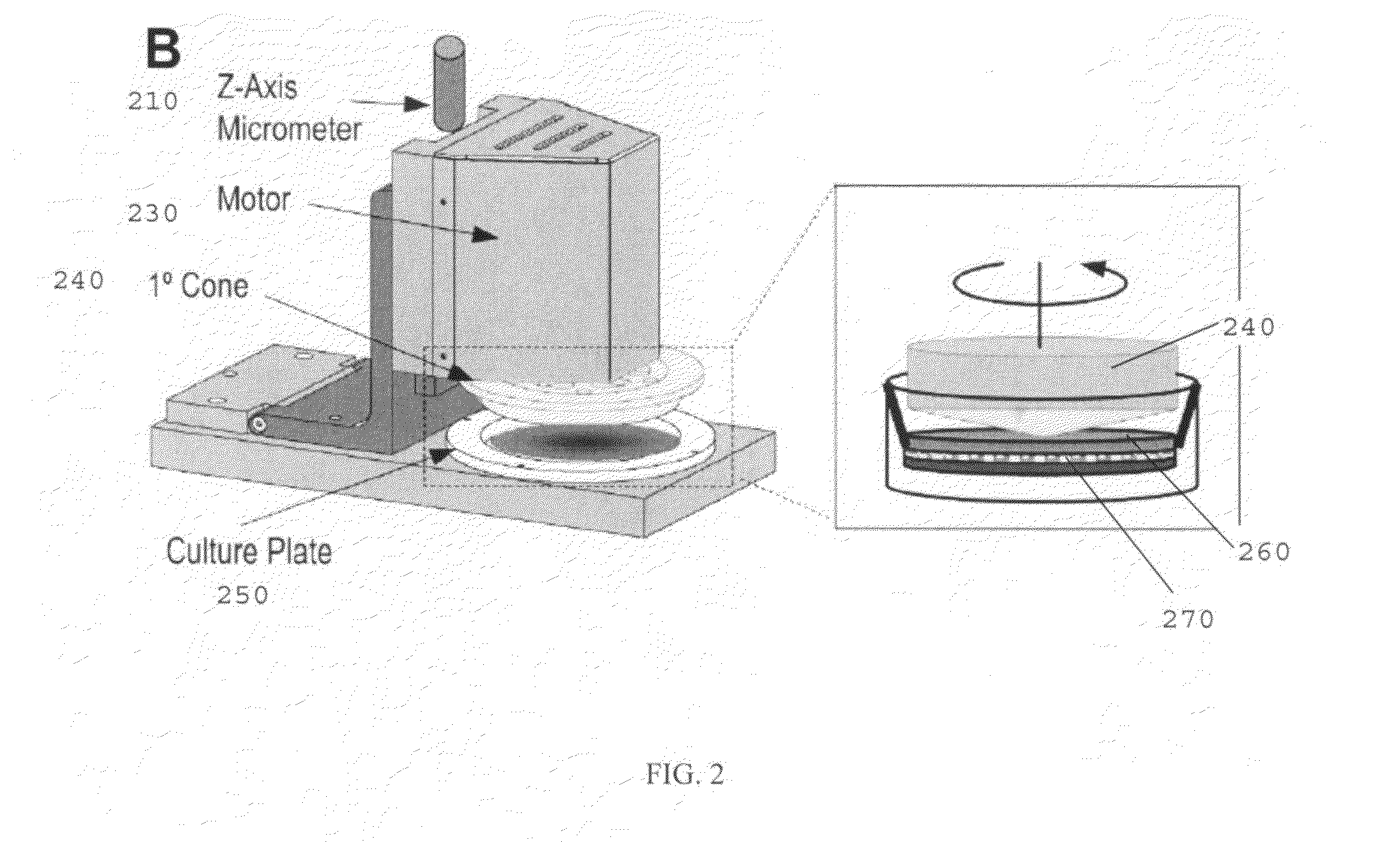Use of an in vitro hemodynamic endothelial/smooth muscle cell co-culture model to identify new therapeutic targets for vascular disease
- Summary
- Abstract
- Description
- Claims
- Application Information
AI Technical Summary
Benefits of technology
Problems solved by technology
Method used
Image
Examples
example
[0070]The following is an example of a method of using the present invention, and is not intended to limit the scope of the invention to the exact method described in this example.
[0071]Human Cell Isolation and Culture.
[0072]Primary human ECs and SMCs were isolated from umbilical cords, expanded, and used as cell sources. Human ECs were isolated from the umbilical vein (human umbilical vein ECs) as previously described, followed by isolation of SMCs from the vein using a similar method as previously described.
[0073]ECs were used for experimentation at passage 2 and SMCs were for experimentation used up to passage 10, both of which have been established to retain the basal EC / SMC phenotype based on the retention of specific EC and SMC markers. Cell types were separately cultured and passaged using medium 199 (M199; BioWhitaker) supplemented with 10% FBS (GIBCO), 2 mM L-glutamine (BioWhitaker), growth factors [10 μg / ml heparin, (Sigma), 5 μg / ml endothelial cell growth supplement (Sigm...
PUM
| Property | Measurement | Unit |
|---|---|---|
| time | aaaaa | aaaaa |
| pore diameter | aaaaa | aaaaa |
| thickness | aaaaa | aaaaa |
Abstract
Description
Claims
Application Information
 Login to View More
Login to View More - R&D
- Intellectual Property
- Life Sciences
- Materials
- Tech Scout
- Unparalleled Data Quality
- Higher Quality Content
- 60% Fewer Hallucinations
Browse by: Latest US Patents, China's latest patents, Technical Efficacy Thesaurus, Application Domain, Technology Topic, Popular Technical Reports.
© 2025 PatSnap. All rights reserved.Legal|Privacy policy|Modern Slavery Act Transparency Statement|Sitemap|About US| Contact US: help@patsnap.com



